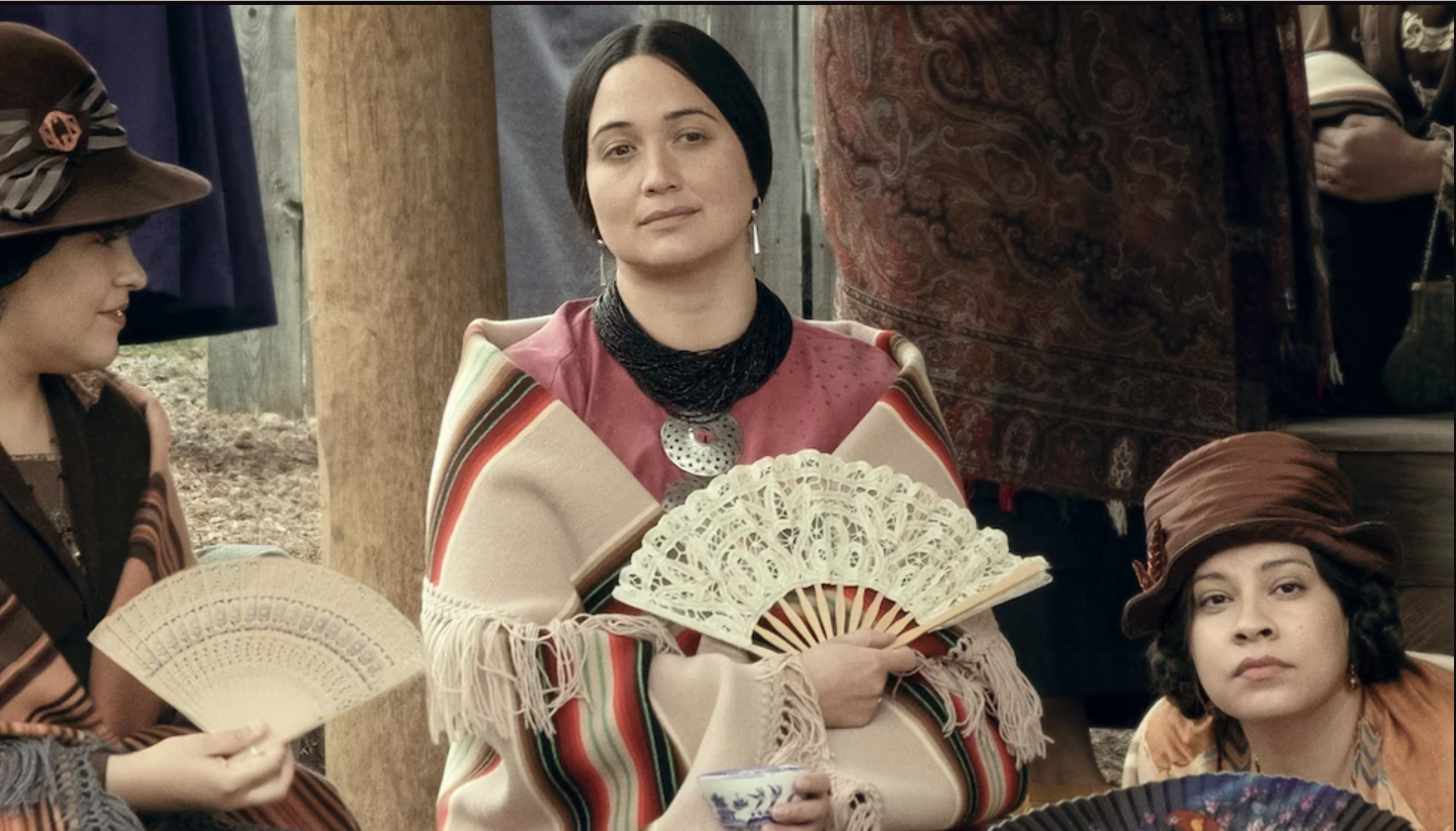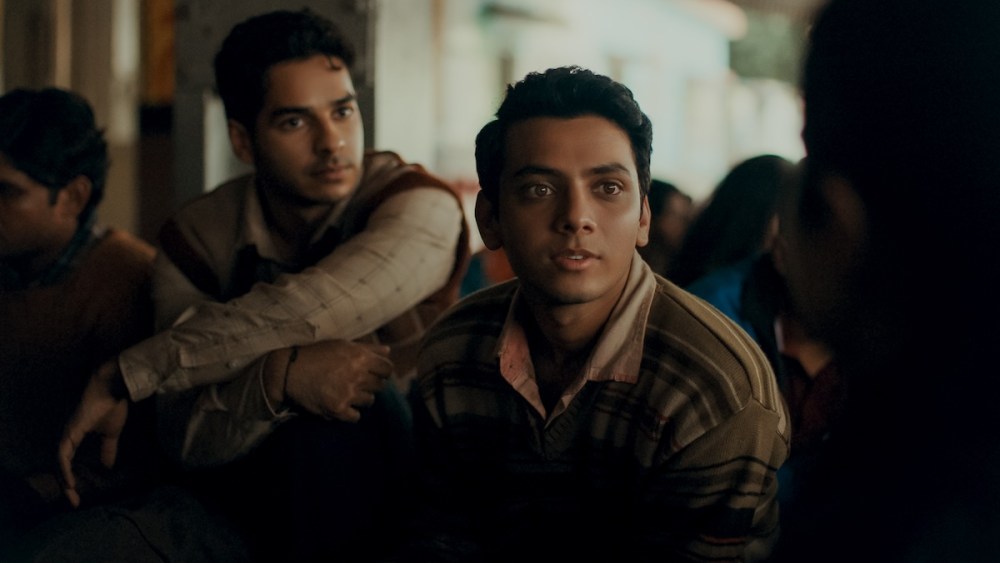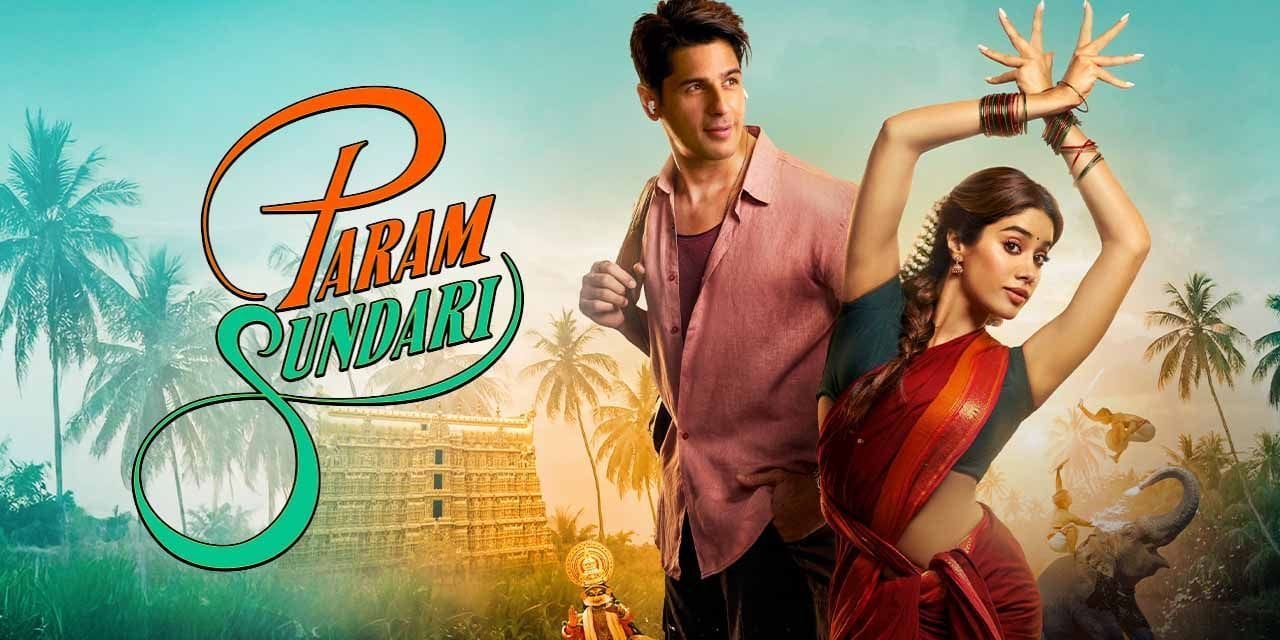In the Chickasaw writer Linda Hogan’s novel Mean Spirit (1990), when the white Euro-American settlers started murdering indigenous Osage women for money in the story that has come to be known in Native American history as the 1920s Osage oil murders, they did not destroy just the human inhabitants of the Osage reservation in the state of Oklahoma. They also hunted and killed eagles and bats, both sacred to the tribe.
Hogan describes the sacred dead eagles being carted away to be sold as Indian artefacts and souvenirs “with the blue-white membranes of death closed over their eyes . . . like a tribe of small, gone people, murdered and taken away in the back of a truck.”
The white settlers who had overtaken Watona were prepared to sell anything and everything in and out of sight; humans, animals, birds, reptiles, graves, bones, feathers, stones, blankets, and, of course, oil—everything looked like money to them. Lionel Tall, a Lakota elder who comes to Oklahoma and who tries to alert Stace Redhawk the indigenous FBI agent about the murders in Watona describes America or “Uncle Sam,” as “a cold uncle with a mean soul and a cruel spirit.”
Hogan’s title Mean Spirit refers to this spirit of “meanness” that characterised the Euro-American settlers of the decade — “meanness,” referring to a temperament that is base, lowly, greedy, avaricious, closed, selfish, tight, vicious, vile, malignant and hard—all descriptors that fit William King Hale and several other white prospectors involved in the historical murders.
Martin Scorsese did not base Killers of the Flower Moon (2023), his new film about the Osage oil murders, on Hogan’s novel, but he has captured Hogan’s Uncle Sam with his “mean spirit,” well. His film is based on popular author and New Yorker staff writer David Grann’s true crime nonfiction book Killers of the Flower Moon (2017), a sweeping historical reportage into the murders that sometimes appeared in historical timelines that traced the early years of the Federal Bureau of Investigation (FBI).
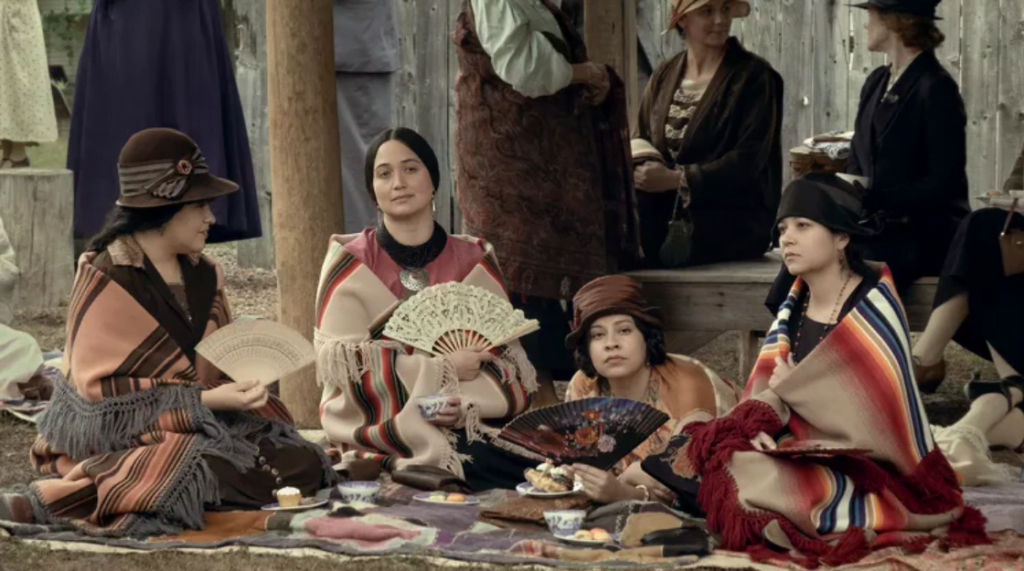
Grann initially began his investigations to satisfy his curiosity about the murders and their connection to the FBI, but as he has noted, once he started his research and began talking to the descendants of the original Osage families affected by the murder and the tragedies, he knew that the book was no longer about a series of murders, but about a chapter of American history itself, in particular, colonization, racism, the exploitation of Native Americans, and the murder of indigenous women. (The Osage murders happened more or less adjacent to the Tulsa Race Massacre or the bombing of the Black Wall Street (1921) by white supremacists, mentioned in passing in Killers of the Flower Moon.)
Hogan’s novel treated the same topic nearly two decades ago, but it told the story through indigenous eyes, interpreting it through indigenous themes, and abiding by the indigenous people. It is perhaps fitting that Scorsese, a non-indigenous director, used a non-indigenous “true crime nonfiction,” book to claim a certain level of “authenticity,” at one cultural remove.
The film opens with a PSA from Scorsese himself that promises to tell a story that is “authentic.” Between 1920 and 1930 when oil was discovered in the Osage lands, the United States government passed a law that stipulated that “full-blooded,” Indians needed white “guardians,” to manage their oil money since they were deemed “incompetent,” to take care of money. All at once the small town swarmed with white men; lawyers, managers, bankers, chauffeurs, brokers, salesmen—everyone wanted a piece of the oil revenue.
Several of these men married Osage women because when the Osage died the headrights passed to their legal heirs who did not have to be Osage. Between 1920-1928, the Osages were one of the richest tribal nations in America.
It was also during this time that approximately twenty-four Osage members, mostly women, but also a few men, were found murdered; shot, poisoned, drowned, or battered to death. A panicked Osage Tribal Council requested the help of the US federal government to help solve the murders. The FBI with the help of undercover officers eventually solved the murders in one specific family and those of their extended kin. Council records indicate that there were several other murders of a similar kind that were never investigated or solved.
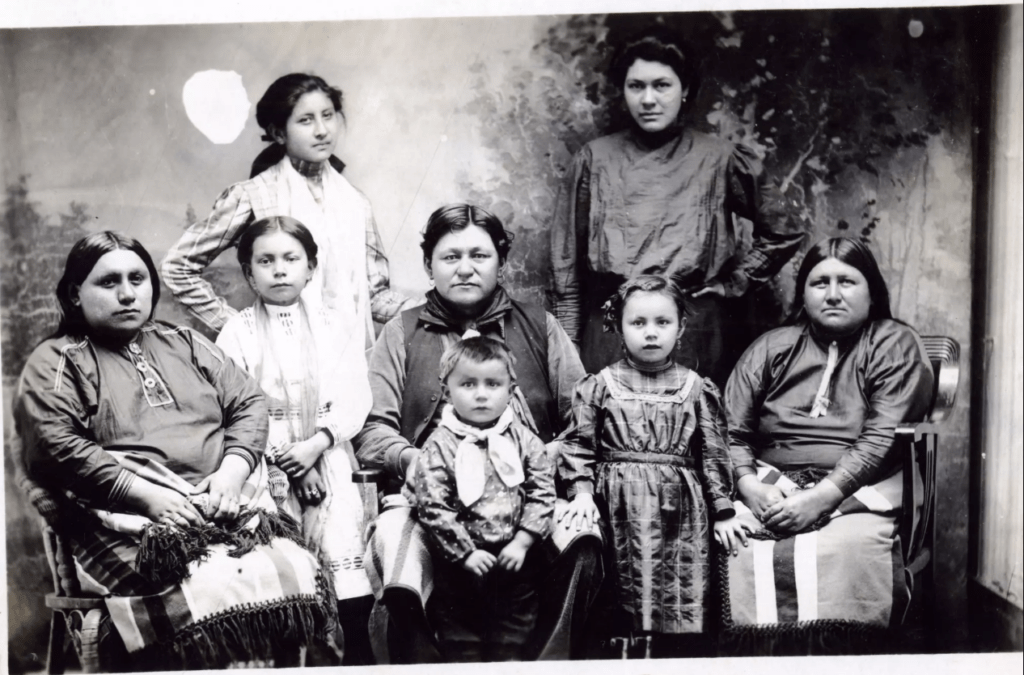
(Oklahoma Historical Society / Getty Images) Via LA Times
Killers of the Flower Moon is in many ways classic Scorsese material. It is a dark story of capitalism, money, greed, deception, betrayal, and murder. Love has no place in the Scorsese universe; thus, the marriage between Ernest Burkhart and Mollie Kyle, the rich Osage wife with a useless white mooch of a husband is a story that is tailor-made for Scorsese. It is an imitation of love, and one of the most heartbreaking scenes in the film belongs to Mollie’s final recognition of the true nature of her husband.
Lily Gladstone, the young Blackfeet actor, plays Mollie with a quiet strength that displays the confidence and vulnerability of an heiress falling for her chauffeur despite intimations of alarm. Leonardo DiCaprio plays Ernest with guile and confusion; the entire film privileges his perspective somewhat which forces us to afford him tentative sympathy. This is a departure from Grann’s book which is told from Mollie’s perspective.
Again, Scorsese appears to be reluctant to borrow the indigenous voice. Thus, Ernest becomes our untrustworthy guide through the film. He is no hero, and he is no lover, but a mercenary husband waiting to collect.
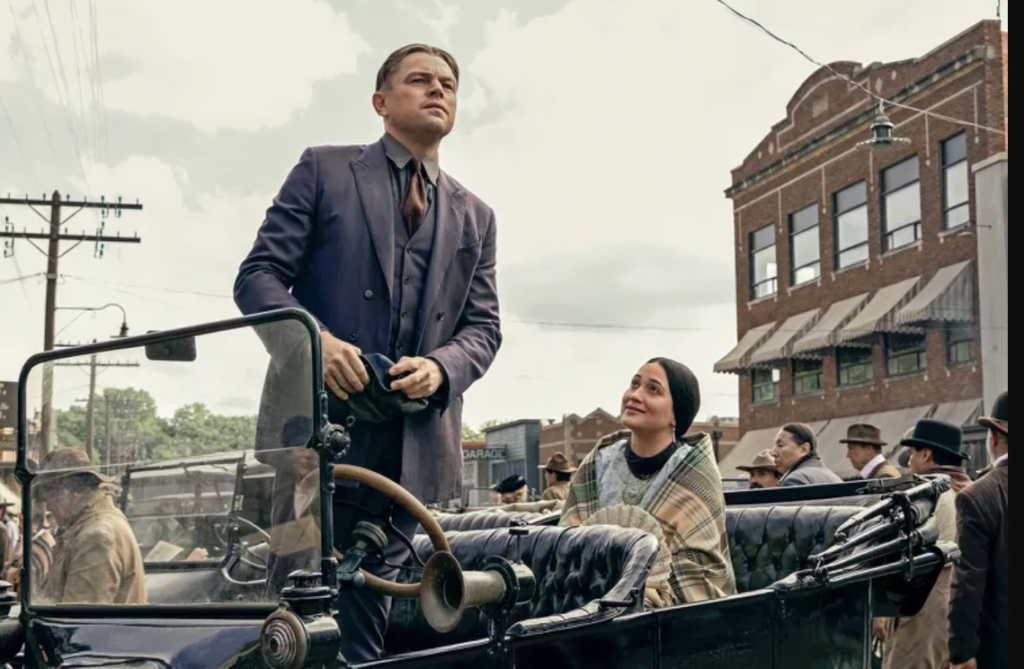
Unlike Gladstone’s and DiCaprio’s interpretations of their somewhat elusive characters—it is not clear how they truly feel about each other—Robert De Niro’s William Hale is almost completely opaque. It is not clear at all why he acts the way he does. There is an Iago-like inscrutability about his penchant for evil and how he truly feels about it all. Much of his dialogue delivered in a quiet monotone is vulgar and suggestive of the great danger he poses behind the psychopathic calm. It is a role De Niro has mastered.
De Niro plays his double-facedness without offering us anything to understand why he does what he does. In this sense, he embodies the instinctive closed-mindedness of a mean spirit. He is essentially a cypher. Or just someone to whom murder means nothing, a psychopath.
The indigenous actors who play several of the key roles deliver excellent performances. The First Nations actor Tantoo Cardinal who plays Mollie’s mother Lizzie Q. brings a memorable brightness to the exhausted and worried mother. Amid the murders when Lizzie Q. sees her ancestors beckon her to them just before she dies, we feel a sense of justice that the dead are never truly alone, however horrifying their exit from life tends to be. The ancestors are always waiting.

Jesse Plemons who has been racking up some great roles recently – in Power of the Dog and Love and Death, for instance – plays Tom White, the FBI agent who solves the murders. Hogan gave the one Indian FBI agent in the original team, John Wren, a very pronounced role in her novel. Renamed Stace Redhawk in Mean Spirit, the young Indian agent finds himself returning to his people and relearning his history not from the corridors of Washington DC but out in the caves and ravines of Watona. I
In Killers of the Flower Moon, the Lakota actor Tatanka Means plays Wren in a memorable cameo. Mollie’s ill-fated sister Anna Brown is played by the new, young indigenous actor Cara Jade Myers in a performance that packs a punch.
From a production perspective, the film tries to create an authentic experience of the collision of two worlds in the twenties: one, indigenous and trusting, and, the other, white and mercenary. The film is set in the original Osage lands but without exoticising it as is the norm in standard Hollywood films featuring Native American themes. There are not that many wide shots that emphasise the “nature,” trope one has come to expect from these treatments. The opening montage with the eruption of oil feels forced but it acts like a transition to the main story.
The film features characters who speak the Osage language, which is an endangered language. Osage people were involved in the making of the film, both as actors and as crew members assisting with the production. Chief Standing Bear of the Osage nation has talked about working with Scorsese and how Scorsese earned his trust and that of the Tribal Council to tell the story of his people.
Scorsese’s style of filmmaking does not revolve around a mise en scene approach; even so, the overall texture of the film provides a somewhat immersive experience into the 1920s Osage nation, their homes, clothing, jewellery, hats, blankets etc. Robbie Robertson’s original score is a quiet accompaniment to the unfolding horror in the film.
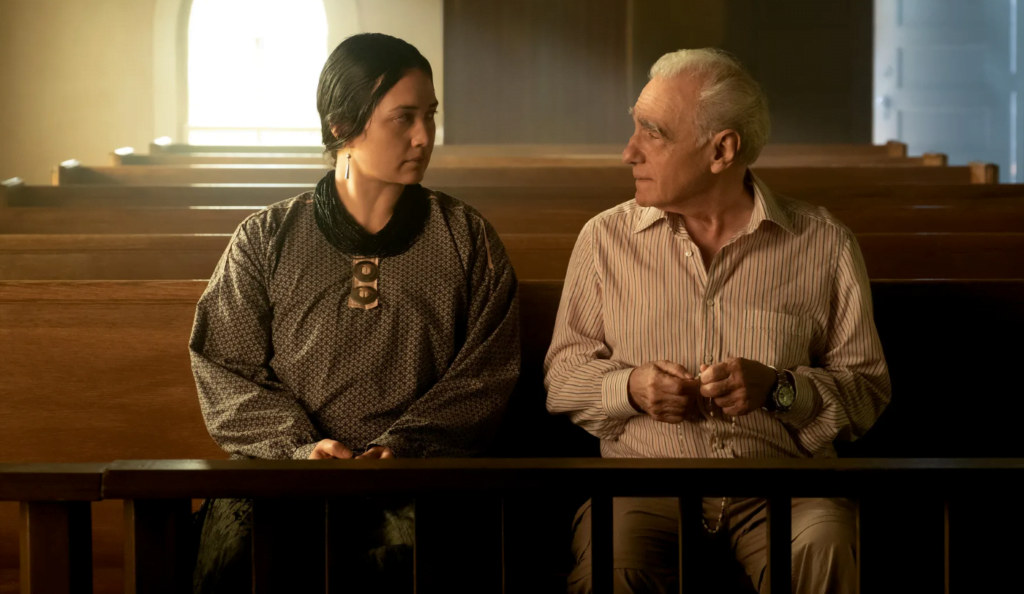
All that being said, with due credit to Scorsese’s attention to authenticity, Killers of the Flower Moon might be a film more for non-indigenous viewers than for indigenous viewers. The relative privileging of Ernest Burkhart’s perspective is a problem in this regard. Also, apart from small moments of consultation between the mother and the daughters, or between Mollie and her sisters, we don’t get a sense of the community’s response to these murders.
But respond, they did. We tap into this deep layer of the Osage nation’s determination to come back from where violence had consigned them with a profound intensity in Linda Hogan’s novel. They were acting. They were reacting. Perhaps this is the difference between a story told through fiction’s inner eye and one told through nonfiction’s outer eye.
